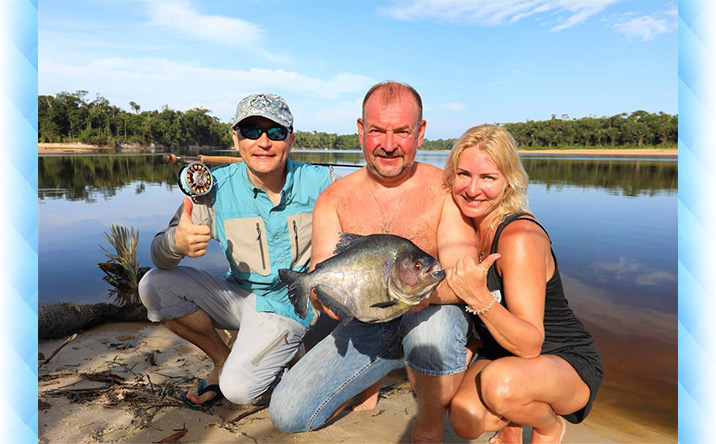 |
|
If you like our repor, we are ready to arrange a similar trip for you. Here is a link to our detailed program. We offer the tour at a unique price of 5900$ (provided that the group consists of 6 fishermen or more)! It’s time to book a tour for the next season now! на подробную программу. Мы предлагаем эту поездку по уникальной цене в 5900$ (при группе от 6-ти рыбаков)! Сейчас самое время забронировать аналогичный тур на следующий сезон! |
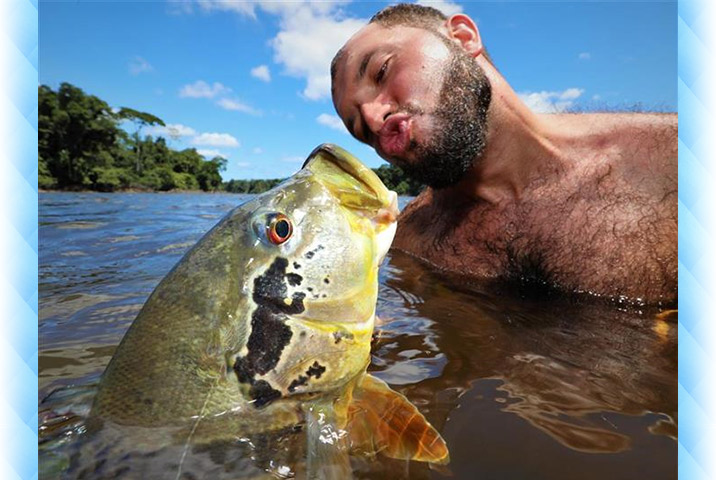 |
|
Learn more about our last minute tours and other incredible offers for the season! |
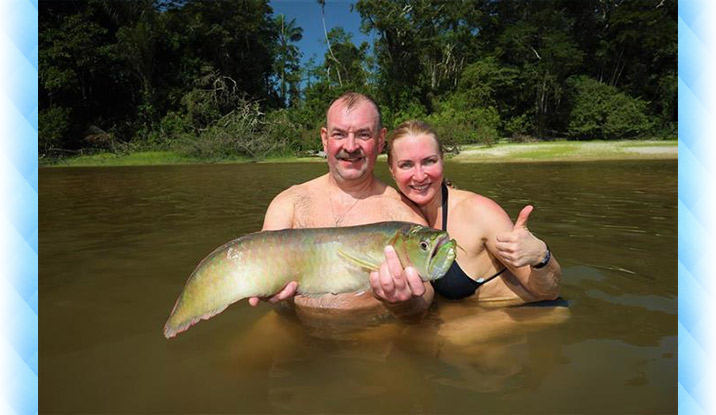 |
|
Our fishing adventure was a remarkable one, we enjoyed the amazing nature of Brazil, and I was lucky to take a photo and video of a jaguar swimming across the river! We’ll make a special video about it later. |
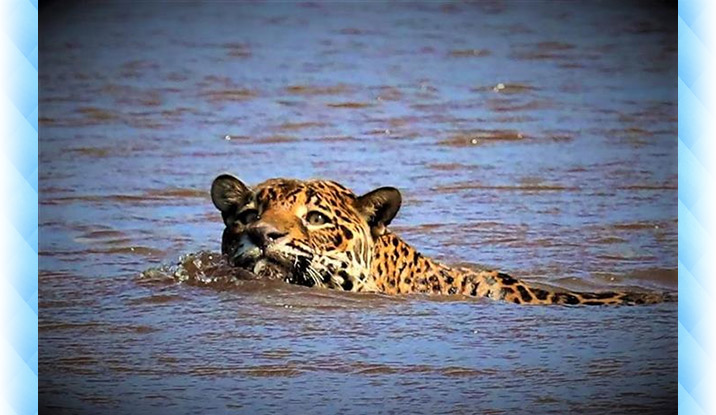 |
|
The river we were fishing in is extremely hard-to-reach for other fishermen due to its remoteness from civilization and a large number of shallows which are practically impossible to overcome for any vessel with a group of fishermen aboard. A flight by a private plane and a 3 hour trip by a speed boat equipped with a 300-horsepower outboard motor (average speed 70km per hour) allowed us to get to places where time stopped, and where we could not find a single settlement for many kilometers around. |
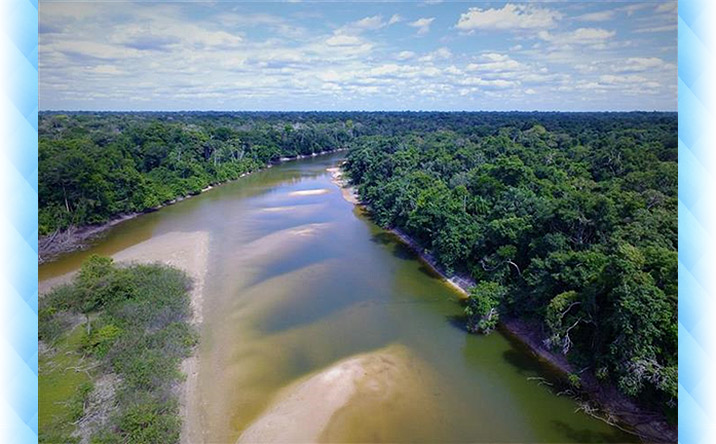 |
|
It would have taken us 15 hours of continuous movement by boat to get to the nearest Indian village located in the upper flow of the river. |
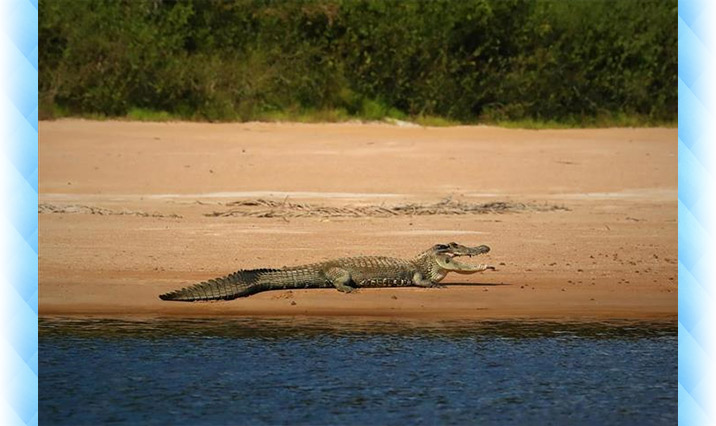 |
|
Imagine hundreds of thousands hectares of untouched jungle with the minimum fishing pressure and one of the most stable and numerous populations of peacock bass in Brazil! |
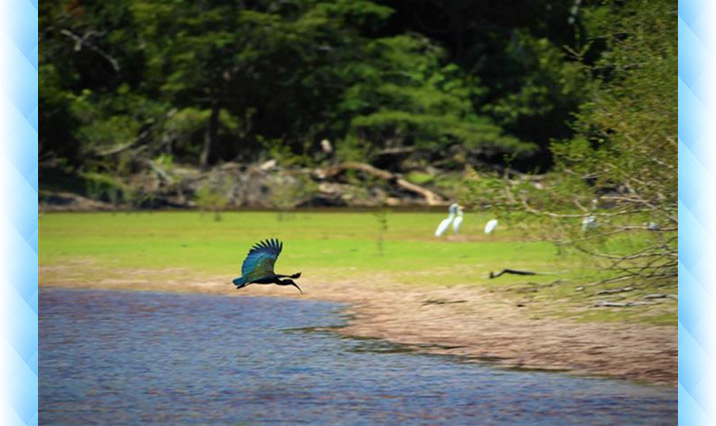 |
|
Only due to the minimum draft and the experience of the local guides we were able to drive the base camp to these places at high water. The shipment of clients, food and fuel is implemented with the help of private aviation and speed boats only. |
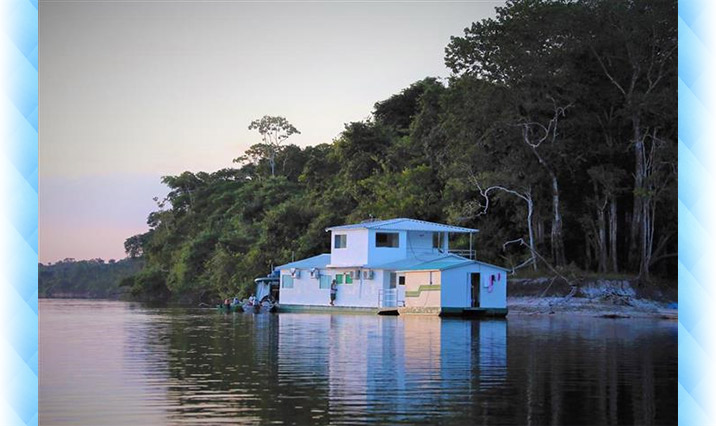 |
|
A spacious dining room, a kitchen with excellent cooks were at our disposal |
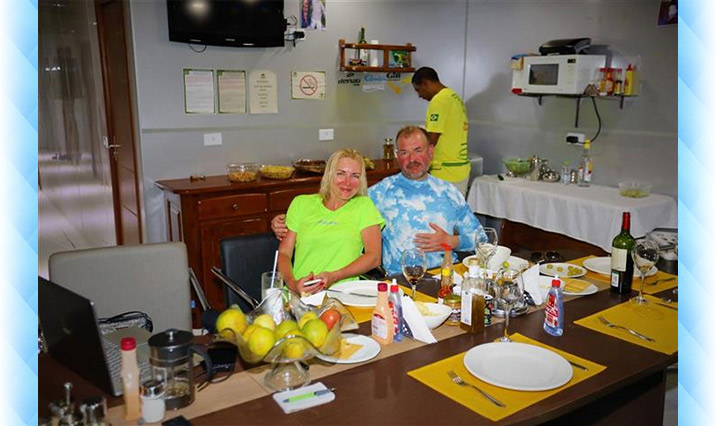 |
|
as well as comfortable rooms with air conditioning and separate bathrooms, |
 |
|
and we can’t fail to mention the breathtaking river and jungle views. |
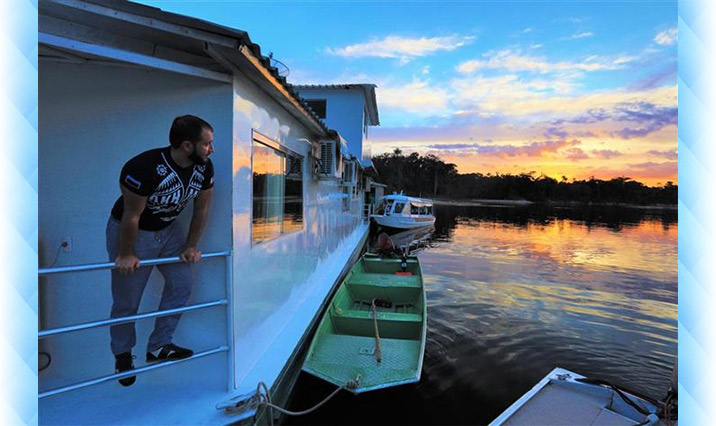 |
|
Only when you happen to be in a complete isolation from civilization, you do feel the value of modern conveniences and trifles we are so accustomed to in our everyday life. The Amazon fish is not a trophy only, it is also remarkable from a gastronomic point of view. In the skillful hands of the cook on our yacht any dish turned out to be of the best quality, and all the fishermen appreciated the food. |
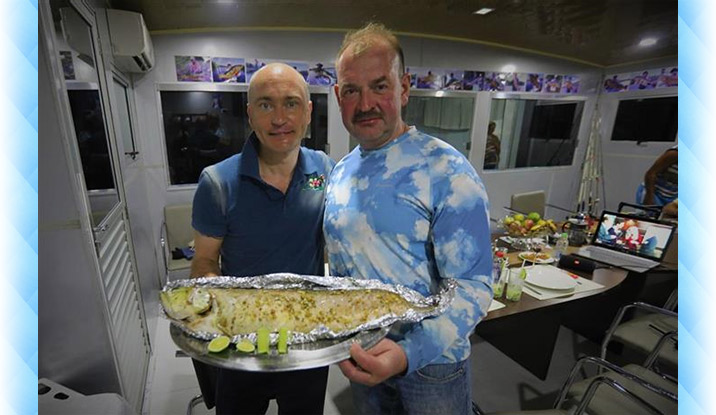 |
|
On the day of our arrival we had dinner and prepared fishing tackle for the upcoming fishing. It may seem to you that a whole week of fishing in the jungle of Amazonia is too much, but believe me, the time flies by instantly. |
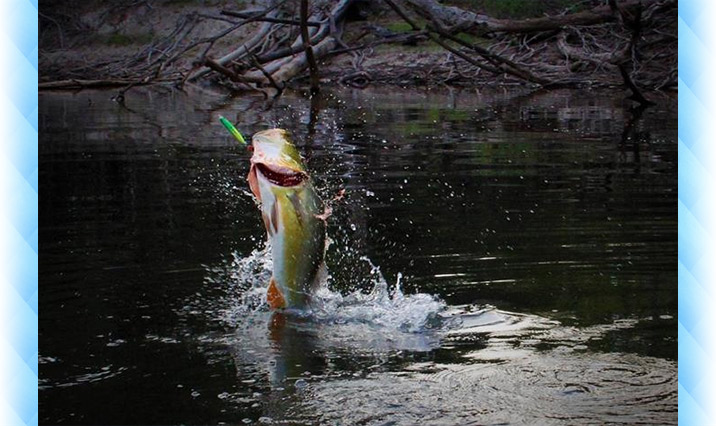 |
|
When we speak about the strongest freshwater fish, the “peacock” or the peacock bass immediately comes to my mind. It goes without saying, that to catch such a predator we need fishing tackle with the maximum degree of reliability. |
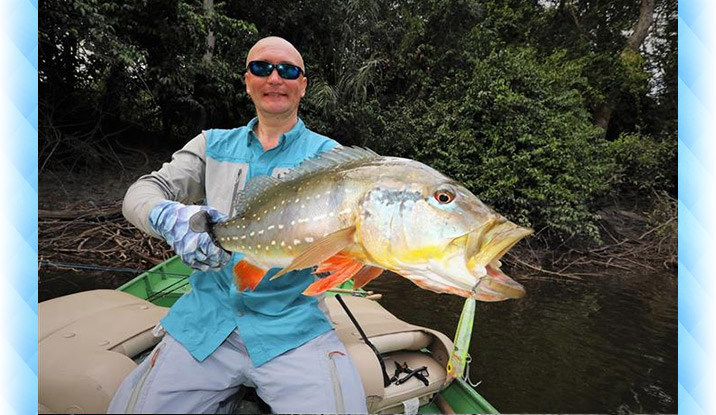 |
|
While fishing with a spinning rod we usually use rods with the length of 7 ft and test of 1-2 oz. Only such tackle can stop the fish fighting on the hook. We use fast action rods in “peacock” fishing. |
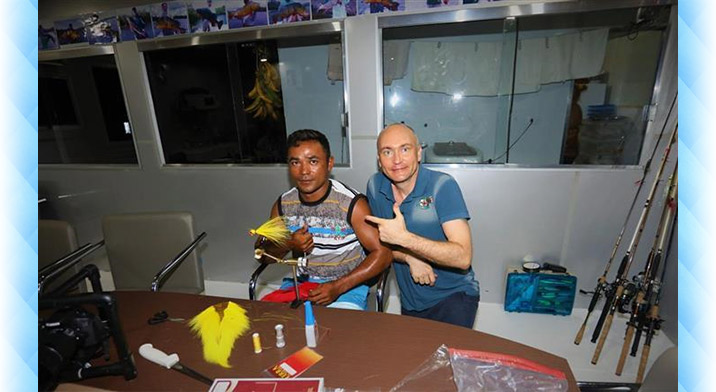 |
|
The first going out for fishing is always exciting. It is necessary to explore the water area, to “read” the river, to find the places where the predators stay, to find the accumulation of “forage” fish, and select the most active baits. |
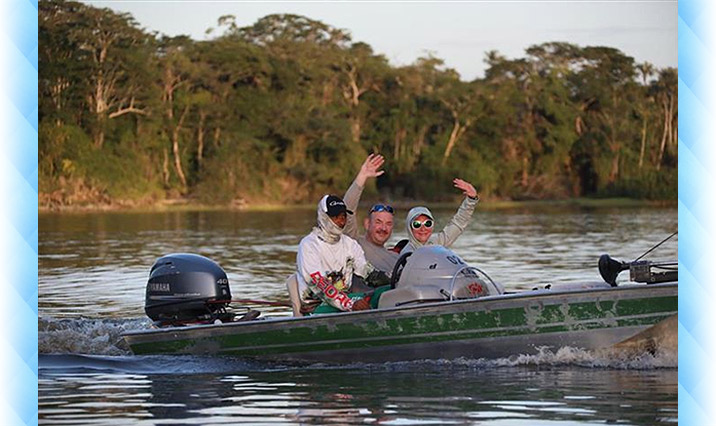 |
|
The first trophies are always unforgettable, especially when it comes to jungle fishing which is brand-new for our clients! |
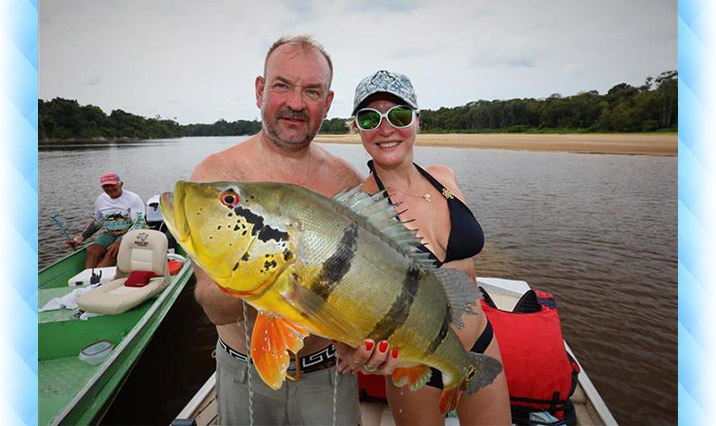 |
|
The river was rich in peacock bass and other trophies: aruana, |
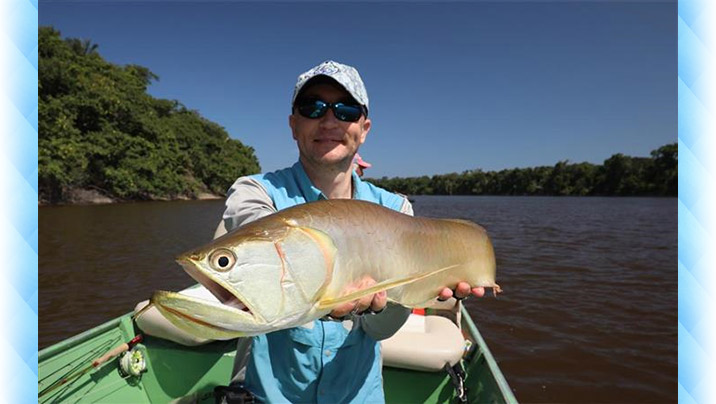 |
|
trahira (every day we caught dozens of this prehistoric fish), |
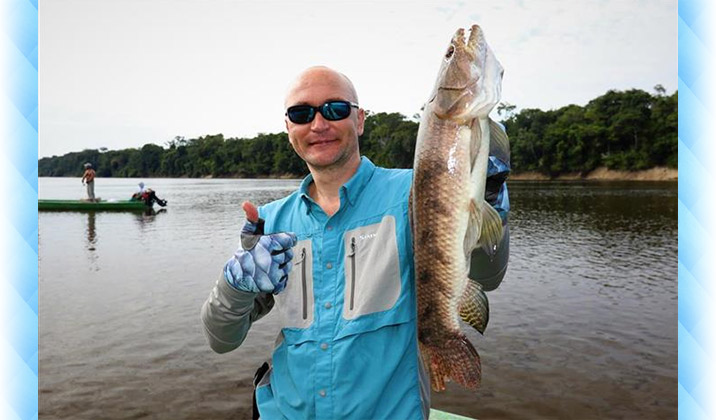 |
|
bicuda, |
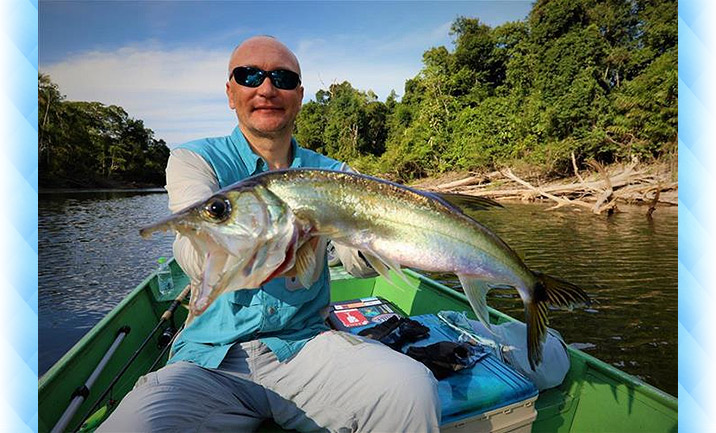 |
|
jacunda, |
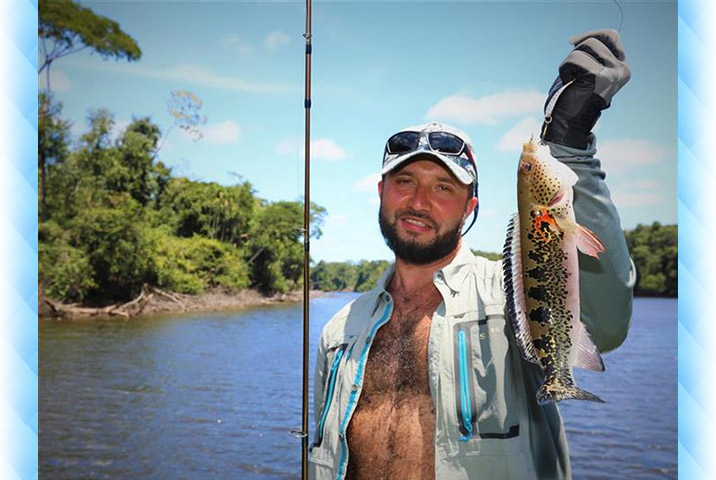 |
|
rampfish, |
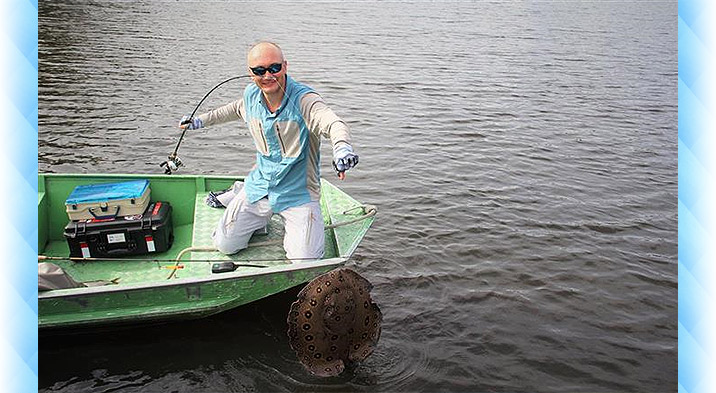 |
|
piranhas, and other exotic predators which attacked our baits violently. |
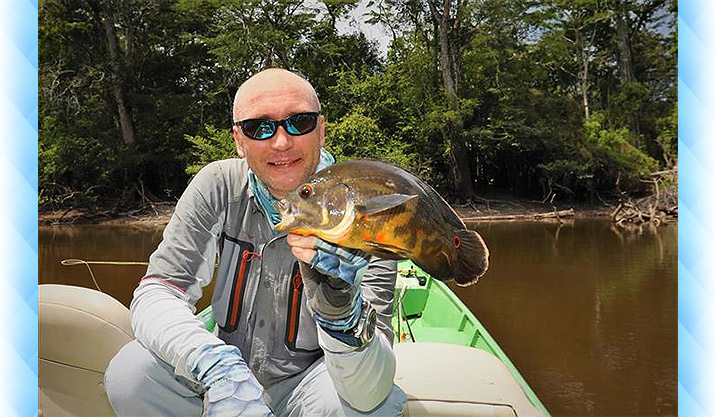 |
|
On the average, each fisherman caught 100-150 peacocks and a lot of other trophies. And in this report, I would like to give you some information on the peacock bass fishing technique and the habits of this marvelous fish in general. |
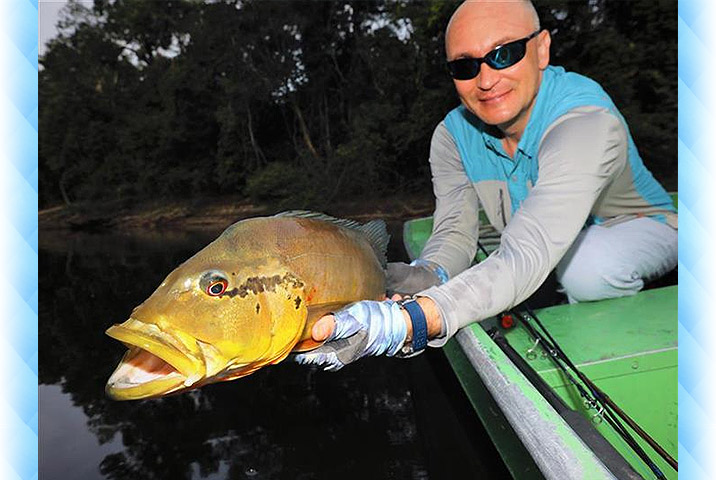 |
|
Together with the TFO и Okuma spinning rods described above, while choosing fishing tackle for our clients, I had tested a great number of different reels till I finally found Quantum PT (2018) in the size of 30-50 which corresponds to 3000 – 5000 according to Shimano classification. The minimum weight, the most powerful ceramic-carbon brake, a very capacious spool, an extremely durable titanium shackle, 12 excellently protected bearings – these are only some of the factors underlying my choice. You will be able to test the reels yourself during our fishing and you will really enjoy this well balanced tackle. |
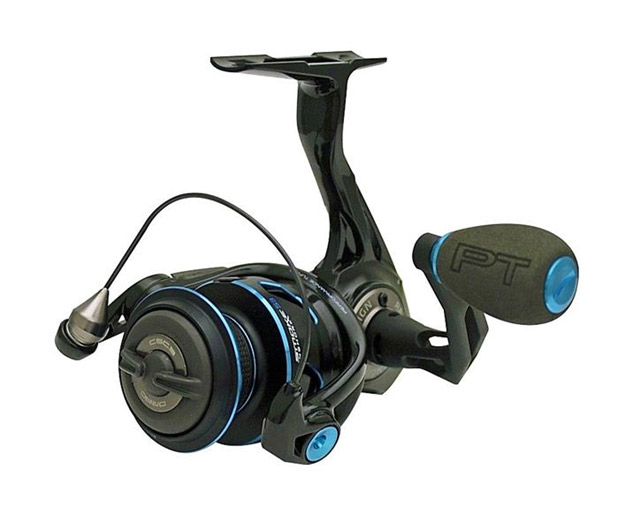 |
|
A braided fishing line is one of the main elements of the successful peacock bass fishing. Each season we order kilometers of brand-new lines to ensure that our clients win in the battles with the strongest fish of the planet. To catch a peacock you need a highly reliable braided fishing line 40-65 lb. It is possible to analyze different fishing lines infinitely, but if you can afford it, 55 or 65 lb Daiwa fishing lines is the best choice for you. |
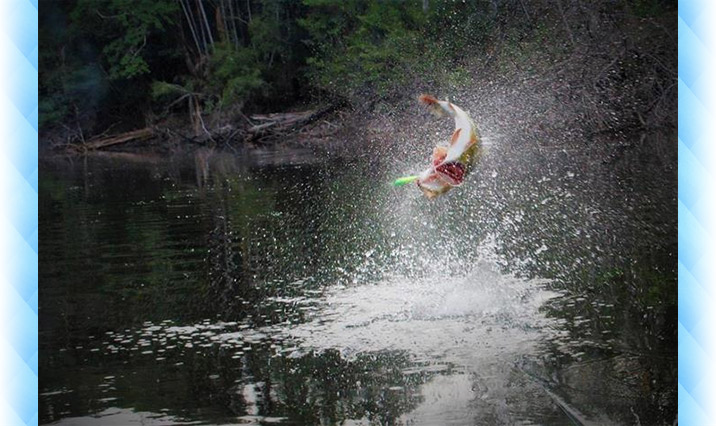 |
|
Despite the fact that the weight of this fish is 15 kilos “only”, the largest specimens can unbend the Owner 2/0 hooks and tear 50 lb fishing lines during their attack! The bass often ambushes and can develop a really huge speed during this short jerk. That is the reason why we are so serious about our fishing tackle and check all our hooks, swivels, and clockwork rings. A large “peacock” forgives no mistakes and negligence! |
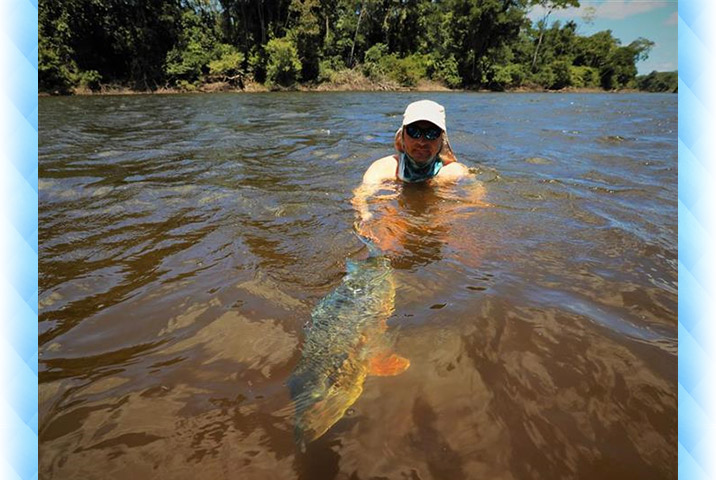 |
|
The air temperature was comfortable enough, but nevertheless, we made a break from 12.30 to 15.00 p.m. to enjoy the gastronomical qualities of the trophies we had caught, to swim and relax in the shadow of tropical trees. |
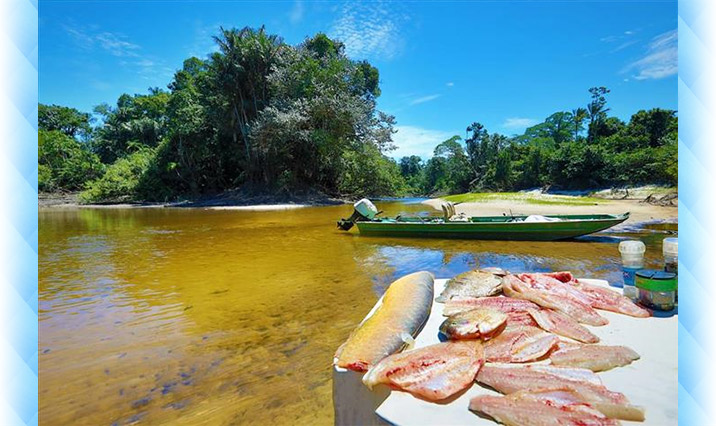 |
|
The guides cooked the fish we had caught perfectly, |
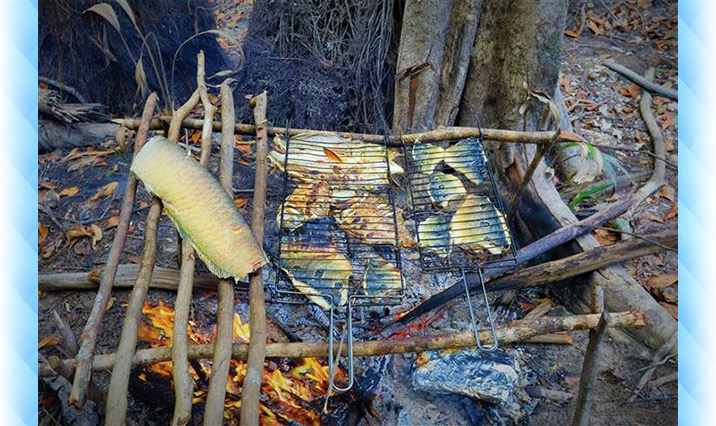 |
|
I cooked the garnish, |
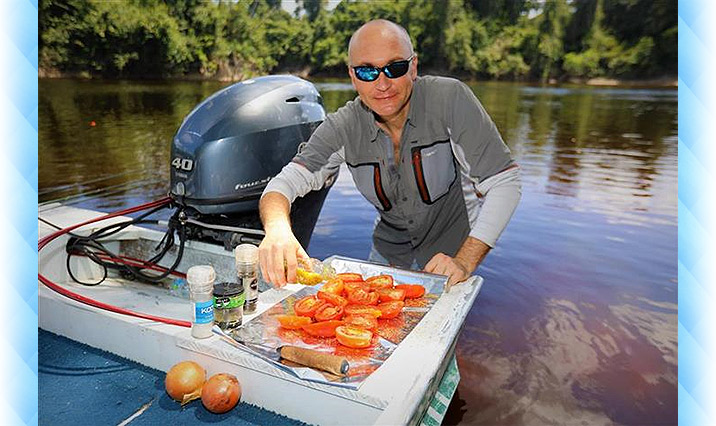 |
|
while the guests enjoyed their relaxation and took photos with the trophies they had caught just before lunch. |
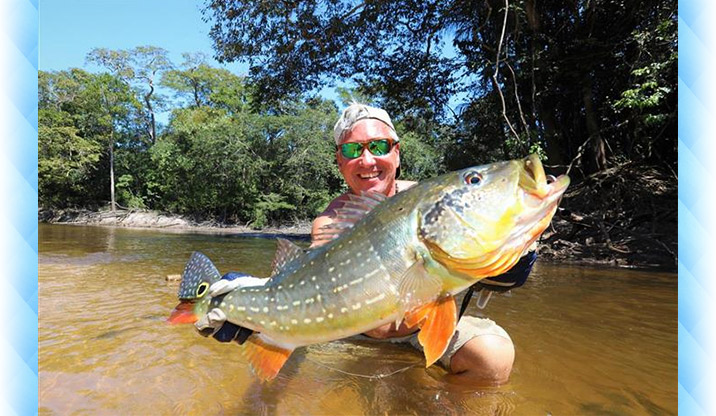 |
|
We pay great attention to cooking, and our lunches in the open air are always of the premium quality. |
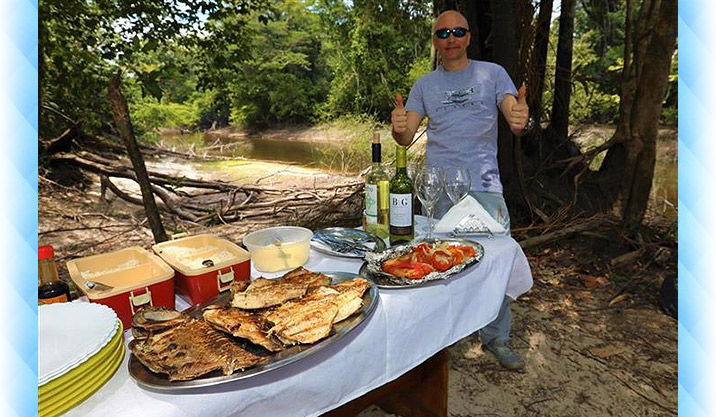 |
|
Our lunch was followed by a siesta in hammocks. |
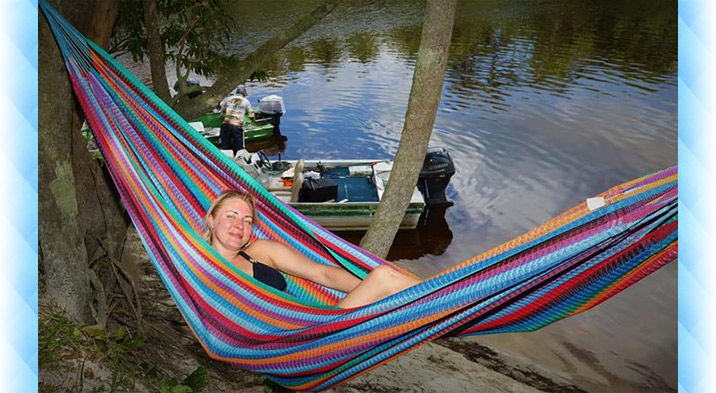 |
|
We went on fishing till 6 p.m., as it got completely dark at 6.30 p.m. Returning to the choice of baits for the “peacock”, it is necessary to discuss the importance of teamwork. There are usually 2 fishermen in each boat. I always recommend having 2 spinning rods per each and the bait types on each spinning rod should be different. |
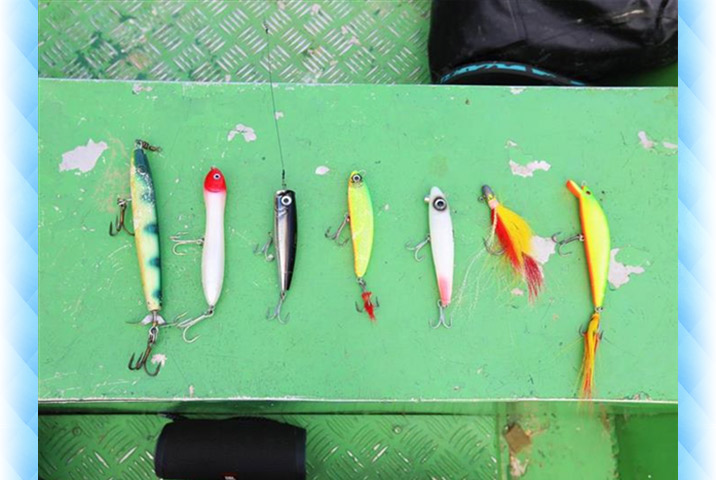 |
|
The main baits for this fishing can be divided into 4 groups: topwater baits (propbaits, walkers, jerks, poppers), wobblers with a different degree of flotation and sinking, feather jigs and lures. So, my main recommendation is to have one of each group on a spinning rod on each boat at the beginning of fishing. |
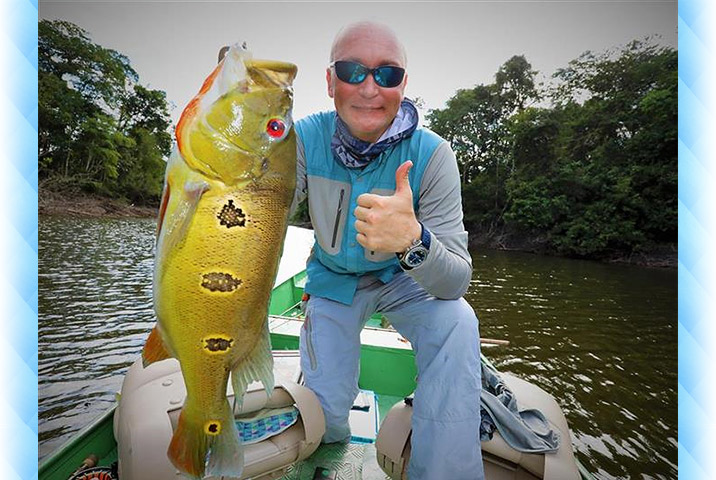 |
|
During the first hour or two the fishermen identify the most efficient baits (on different days they can be absolutely different in the same water area). Then we leave the most effective topwater bait on each of the 2 spinning rods, and these baits are supposed to be of different types, for example, a propbait and a popper, and we use sinking baits of different types on the other 2 spinning rods, for example, a wobbler and a feather jig. Such combination will enable you to be adjusted to the constantly changing fishing conditions. |
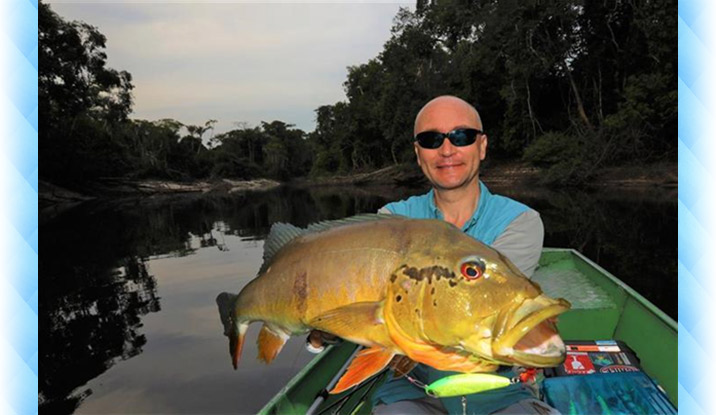 |
|
It is quite important to understand that the tactics of fishing for “quantity” is completely different from the tactics of fishing for “quality”. If you are interested in catching the maximum quantity of peacock bass, then a feather jig, Perversa (in the photo above), and a lure of medium size are the best baits for you (starting with the most efficient). |
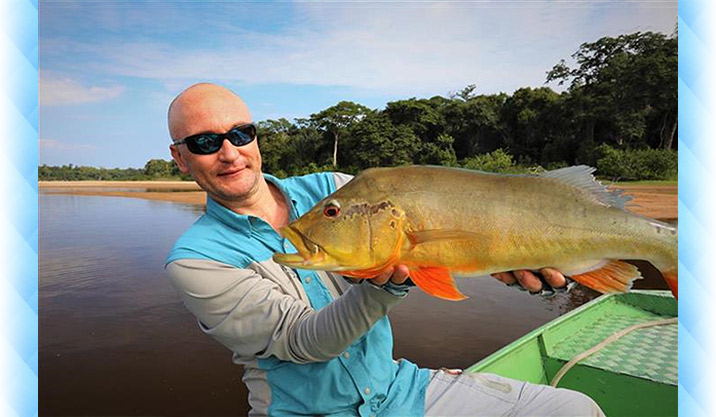 |
|
If you are ready to sacrifice quantity in order to lure and catch a large bass (5 kilos or more), then at least 1 fisherman on your boat should always use a topwater bait (for the sake of the efficiency): a propbait, walker, popper. These baits instigate large bass and cut off small fish. If the bass comes out for the topwater bait but misses it, the second fisherman casts a feather jig or a wobbler in the same place, and in most cases, catches the trophy furious with its mishit. At that time, the first fisherman takes the spinning rod with another topwater bait and casts it in the same direction. If the bass misses the bait (a propbait, for example) it won’t come out for it again, but it will most likely come for a walker. |
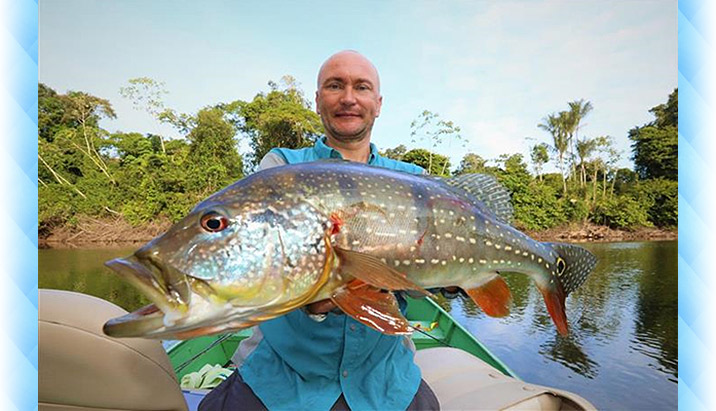 |
|
While fishing for the largest specimens lures are rarely used because of their low efficiency. The main factors ensuring the outstanding trophies are patience and readiness to spend a lot of time in those places where large specimens have been detected. And if they don’t strike at once, you shouldn’t break off and go for more active fish (which is much smaller, consequently). The Americans turned out to be the most patient and efficient anglers. |
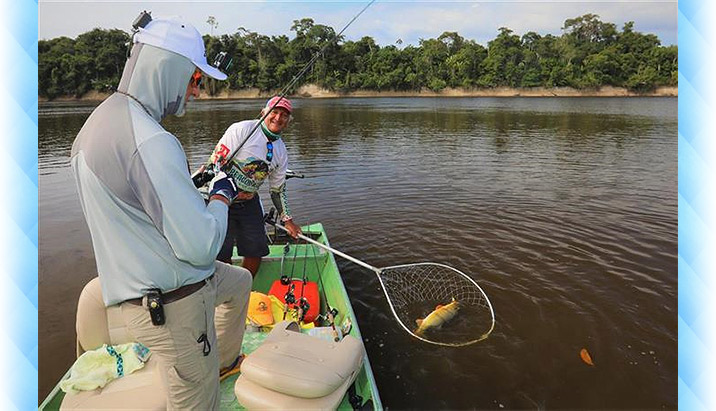 |
|
4 Americans were fishing simultaneously with our group, and on the last day of fishing (we were leaving one day earlier) I showed them the lagoon where I had caught a lot of large specimens and had struggled with the bass weighing over 10 kilos. They arrived there, and from 7 a.m. till 6 p.m., without any break for lunch, they were fishing in the area with the length of about 300 meters, where I had had the maximum strikes. The result of their “working” day was the following: they caught 5 peacocks weighing over 9, 8 and 7 kilos. Besides, they caught 15-20 medium peacocks per each. |
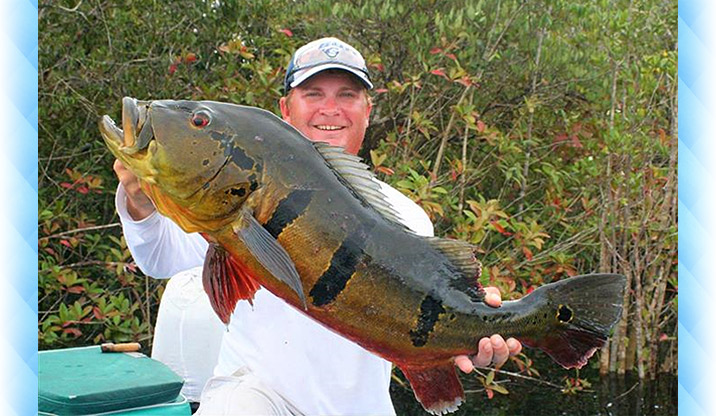 |
|
On the whole, it is necessary to stay long in that part of the water area where large bass were detected and wait for the activity outbursts. Fly fishing is the best way to catch the maximum quantity of bass. |
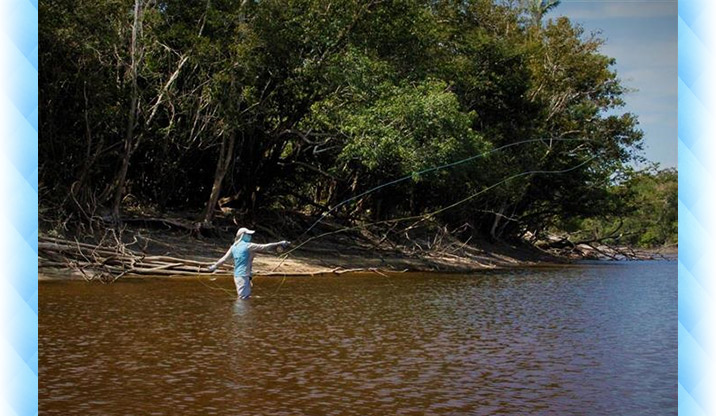 |
|
When you find the accumulation of bass, you can catch all of them, one by one, and even large specimens can be caught at the end, as they are slower and small fish often outrun them. |
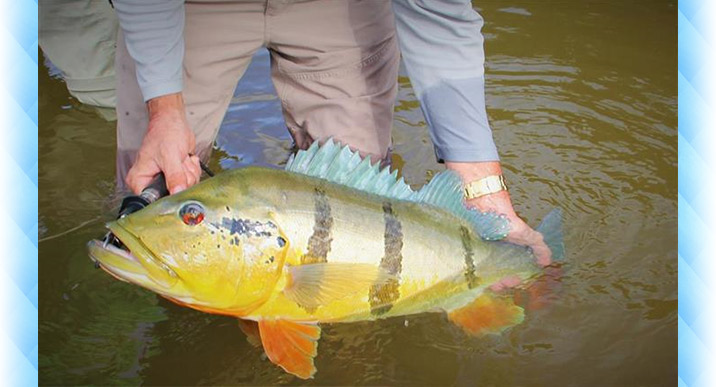 |
|
I set a new personal record. I caught 52 peacocks in 2 hours of fly fishing. |
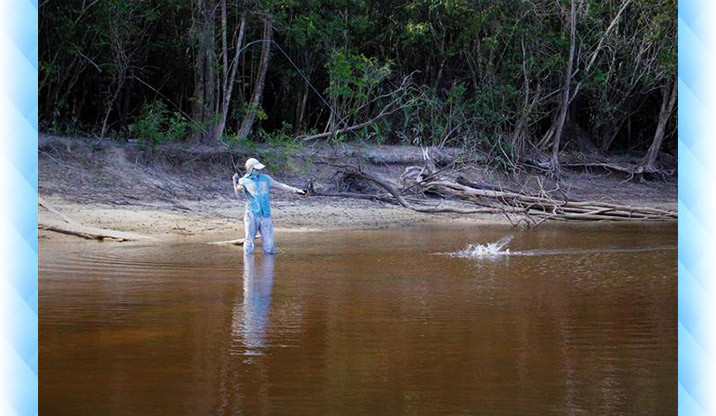 |
|
Fly fishing can show excellent results while catching large peacocks from a boat as well. |
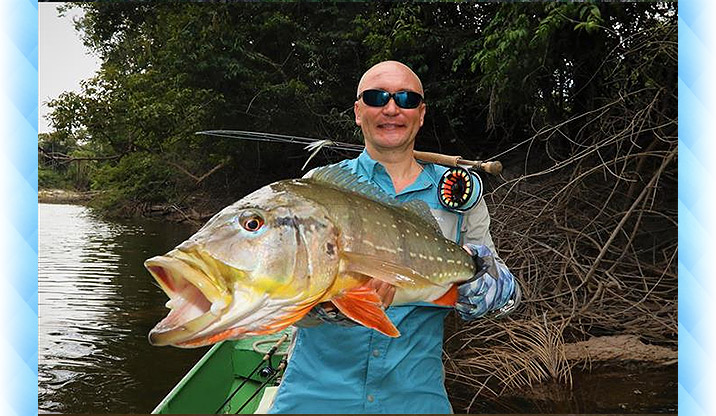 |
|
Fly fishing is especially efficient in the evening, after 5 p.m., when the number of strikes on a spinning rod decreases sharply, but streamers of light colors keep on working till sunset. |
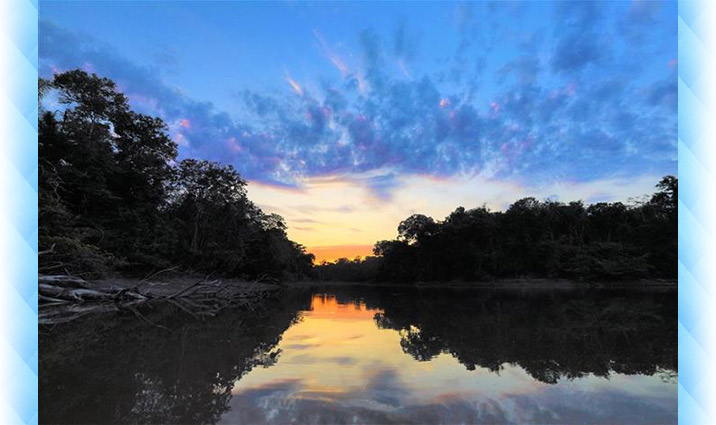 |
|
Fishing in Amazonia is a whole world where you can enjoy your unity with nature, demonstrate your fishing skills and catch outstanding trophies. |
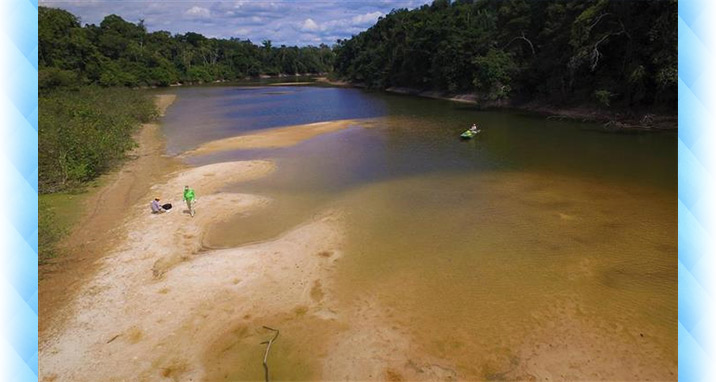 |
|
We fish in the places safe from malaria or other dangerous infections. You will be surprised at the complete absence of mosquitoes, horseflies, gadflies, and other insects. You will appreciate clean water and lovely beaches. Most of our clients come here without being vaccinated. |
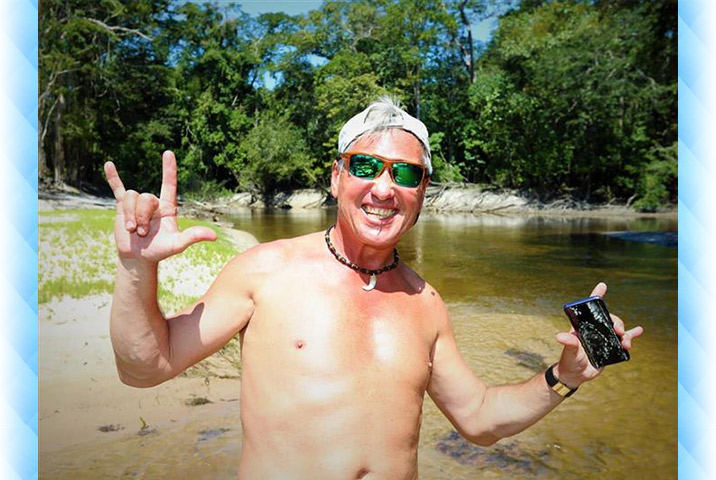 |
|
The main advantages of fishing with us |
|
— we are mobile, so we are able to move our camp to the most promising fishing places, what is more, the final fishing area is defined just before the arrival of the group and we can drive our camp to brand new places while fishing; |
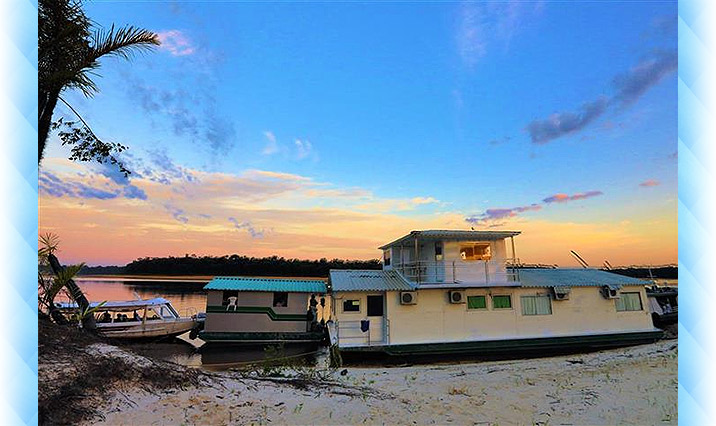 |
|
— we fish in the most remote places which are isolated from civilization; — we are trying to understand you, and we are aimed at fishing for the whole diversity of species, we are not focused at peacock bass fishing only; —we offer you the most reliable and brand new tackle and baits; —our experienced guides will help you increase your fishing efficiency. |
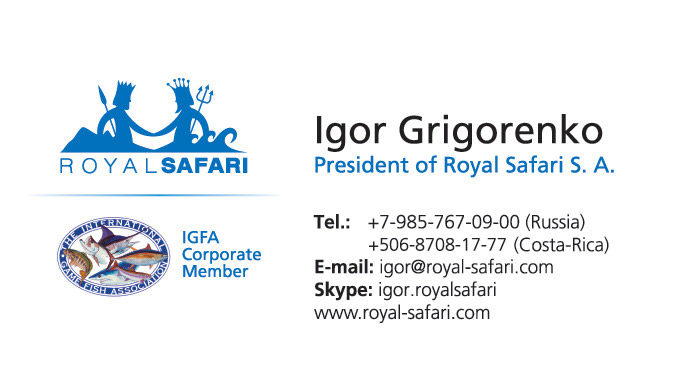 |
BRAZIL FISHING REPORT FEBRUARY 1-8, 2018


















